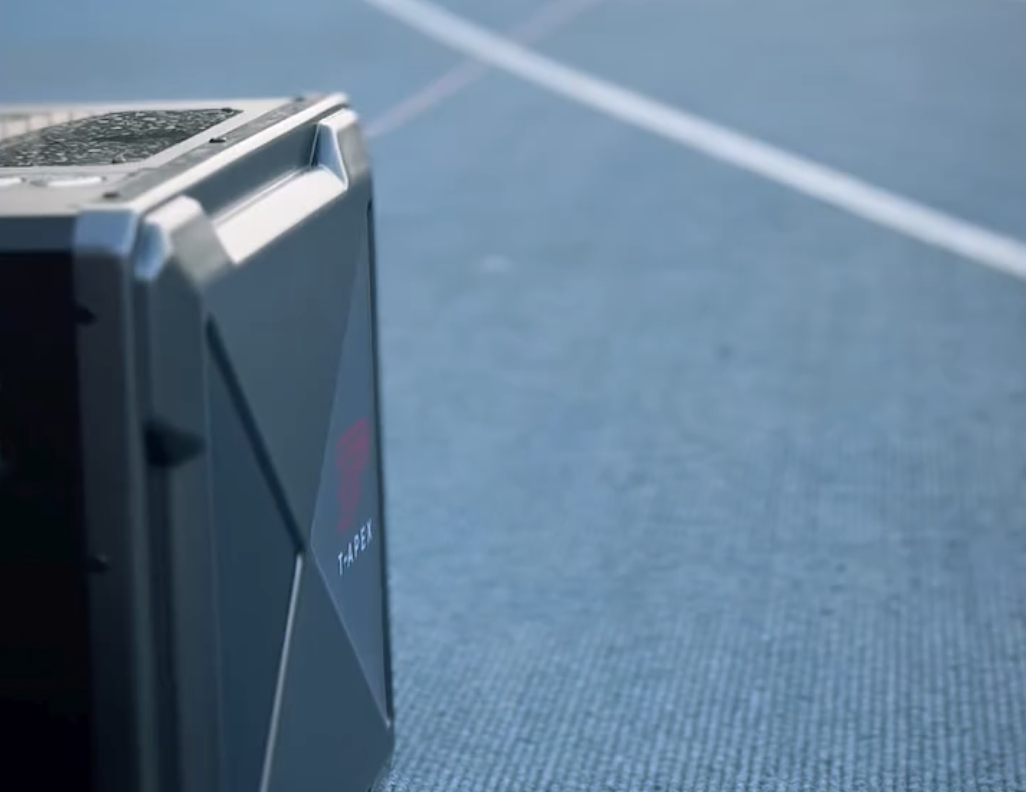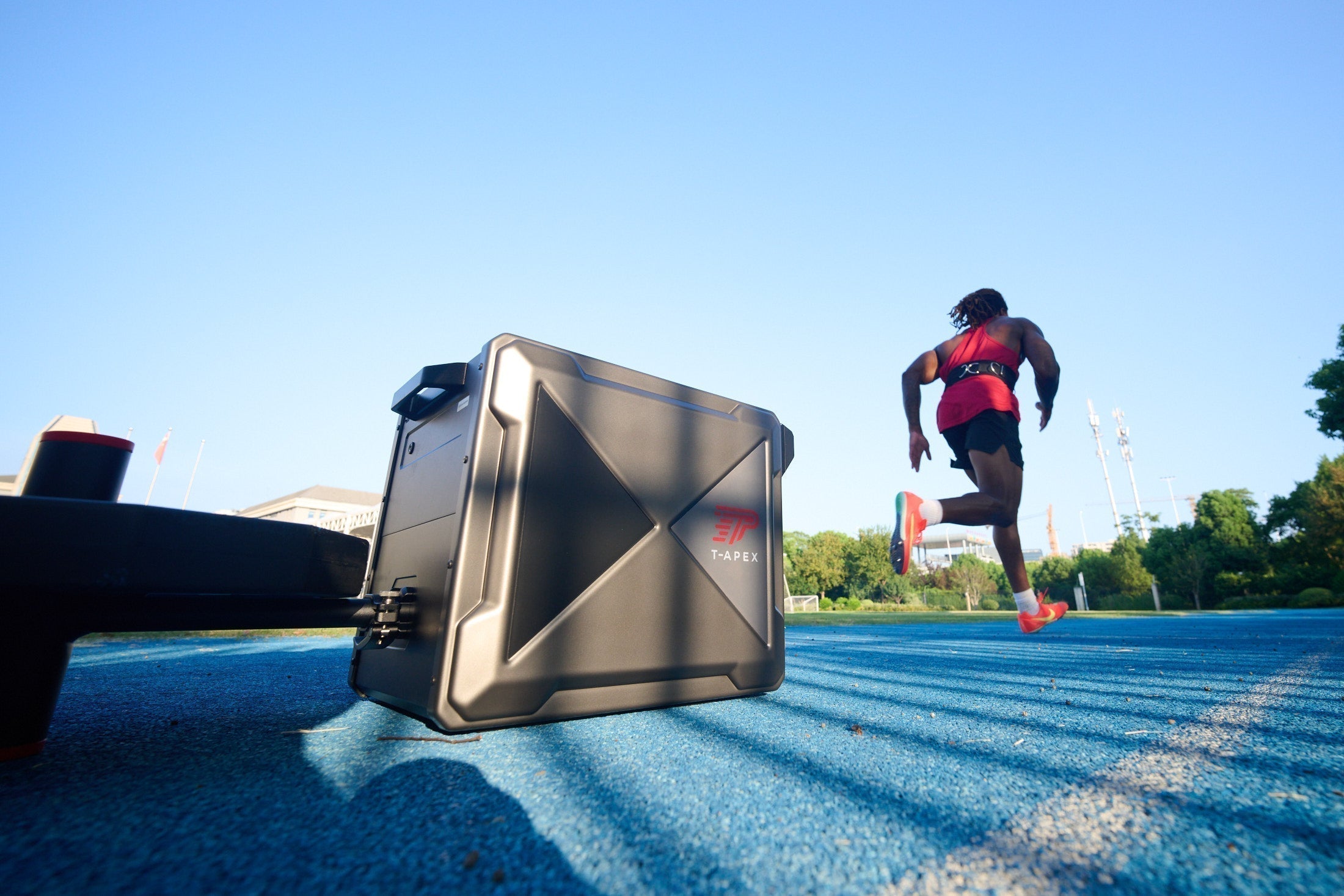From “Faster” to “Smarter”
Assistance training pushes athletes beyond natural limits—forcing the body to adapt to higher stride frequencies and faster reaction cycles.
But traditional tools like elastic cords often cause more chaos than progress—results are inconsistent, hard to control, and difficult to repeat.
The question now isn’t “how to go faster,” but “how to train smarter.”
To answer that, let’s look at how assistance tools have evolved—from unpredictable pulling setups to smart resistance systems that finally make speed measurable, repeatable, and safe.
Traditional Assistance Methods: Simple but Unstable
Early assistance tools like elastic cords or towing bands helped athletes move faster—but with little control. Force often fluctuated, rhythm broke down, and results were hard to repeat.
- Unstable tension disrupts sprint posture.
- Load and force cannot be measured accurately.
- Progress depends on “feel,” not feedback.
These flaws led coaches to seek precision—marking the shift from pulling harder to training smarter.
The Transition: From Pulling to Controlling
| Phase | Equipment Type | Key Feature | Limitation |
|---|---|---|---|
| 1 | Elastic cords / towing bands | Manual or partner-driven assistance | Force inconsistency; safety risks |
| 2 | Flywheel / pulley systems | Smoother pulling curve | No feedback; hard to quantify |
| 3 | Semi-motorized systems | Adjustable mechanical control | No data feedback loop |
| 4 | Smart motorized systems (e.g., T-APEX) | Real-time control + precise data feedback | Defines the new era of “smart assistance” |
Assistance training has gradually shifted from experience-based to algorithm-driven control. But to reach true precision, the industry needed an intermediate leap—a system that could mechanically regulate motion, even if it wasn’t yet intelligent.
That bridge was the electromechanical system. These devices established the crucial principle of precise mechanical control, yet their confinement to the lab limited their impact on daily training. The next leap would be to set this precision free.
Smart Assistance, Smarter Control: T-APEX Redefines Speed Training
Built on advanced motor control, T-APEX ushers in a new era of smart resistance — adapting to each athlete’s natural rhythm with measurable, safe, and precisely timed assistance that enhances both performance and control.
➡️ Unlike conventional systems that fix one acceleration and speed target, T-APEX adapts to how athletes naturally build up speed — avoiding excessive pull in the first steps and reducing injury risk.
➡️ Through adjustable Towing Factors, coaches can fine-tune how assistance is applied — from smooth (Soft) starts, to balanced (Medium) drives, or full overspeed (Hard) sessions — achieving smoother, safer, and more targeted training across every sprint phase.

Within the T-APEX app, coaches can take control even further — setting different speed targets across defined track segments rather than relying on a single acceleration value.
Each athlete first performs baseline tests to measure their personal best (PB) split speeds — for example, every 10 m segment. Based on that data, coaches can precisely customize towing speed for each zone: for instance, setting 90% of PB in the opening 10 m to simulate controlled acceleration, then 95% or more of PB between 60–70 m to safely introduce overspeed stimulus.
In the app interface, ChangeV Distance marks the point on the track where a new target speed is reached, while ChangeV Value defines that target velocity for each segment (e.g., 5 m – 2.5 m/s means the system tows the athlete to 2.5 m/s by the 5 m mark).

This precision control turns Smart Assistance into Smarter Control — transforming overspeed training from a reactive pull into a guided, data-driven process that evolves with each athlete.
With T-APEX, coaches can define both how assistance feels and where it applies, achieving smoother transitions, safer acceleration, and more intentional performance gains.
It’s not about being pulled faster — it’s about moving faster with awareness, precision, and purpose.
The Future of Speed is Intelligent
The future of speed isn’t about stronger pulls or faster numbers—it’s about intelligence.
T-APEX bridges technology and human intuition, turning every stride into measurable insight and every repetition into progress.
For coaches, it ends the guesswork; for athletes, it builds awareness—speed that’s understood, not imposed.
👉 Train with T-APEX — Where Speed Meets Intelligence.

